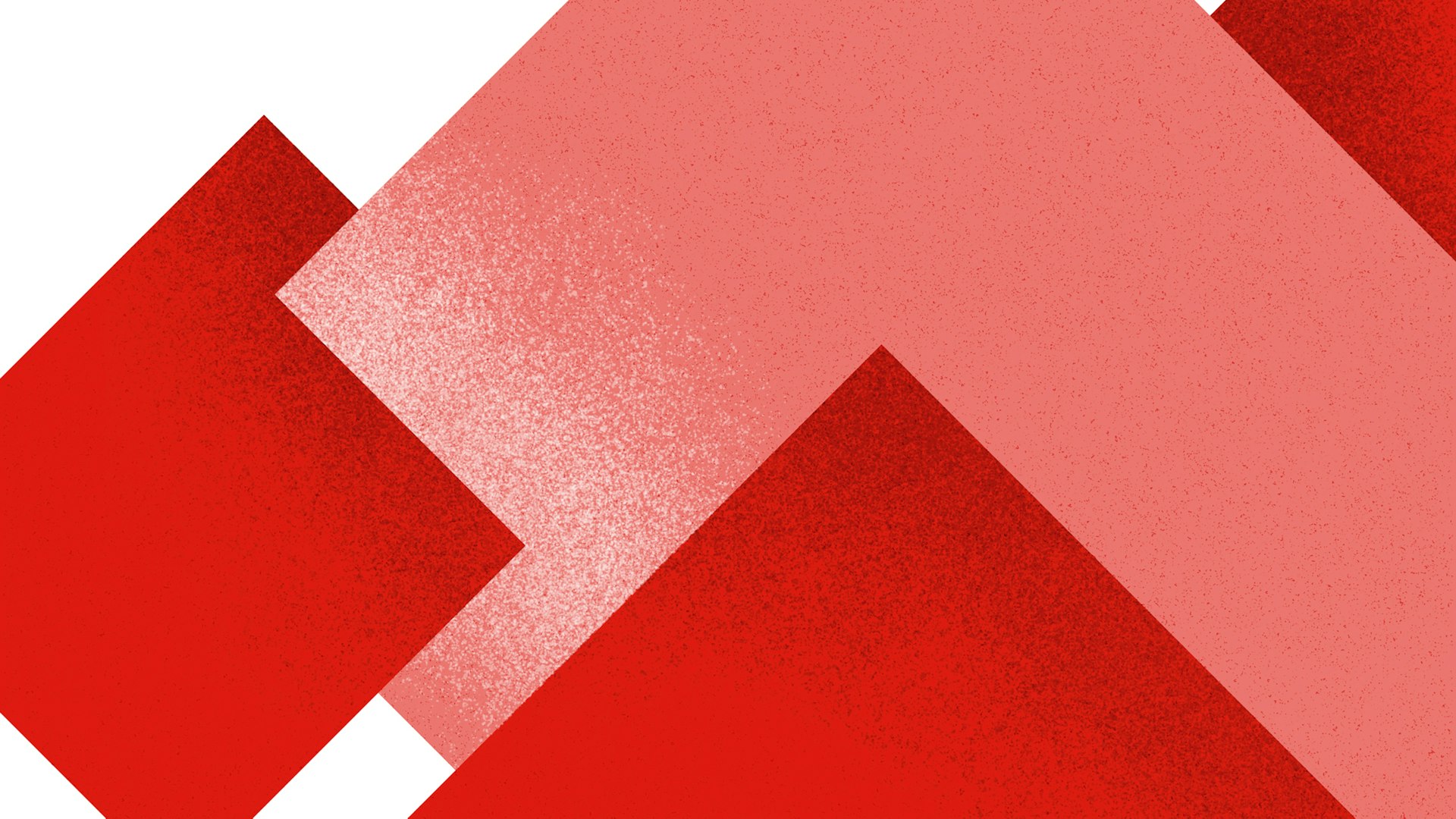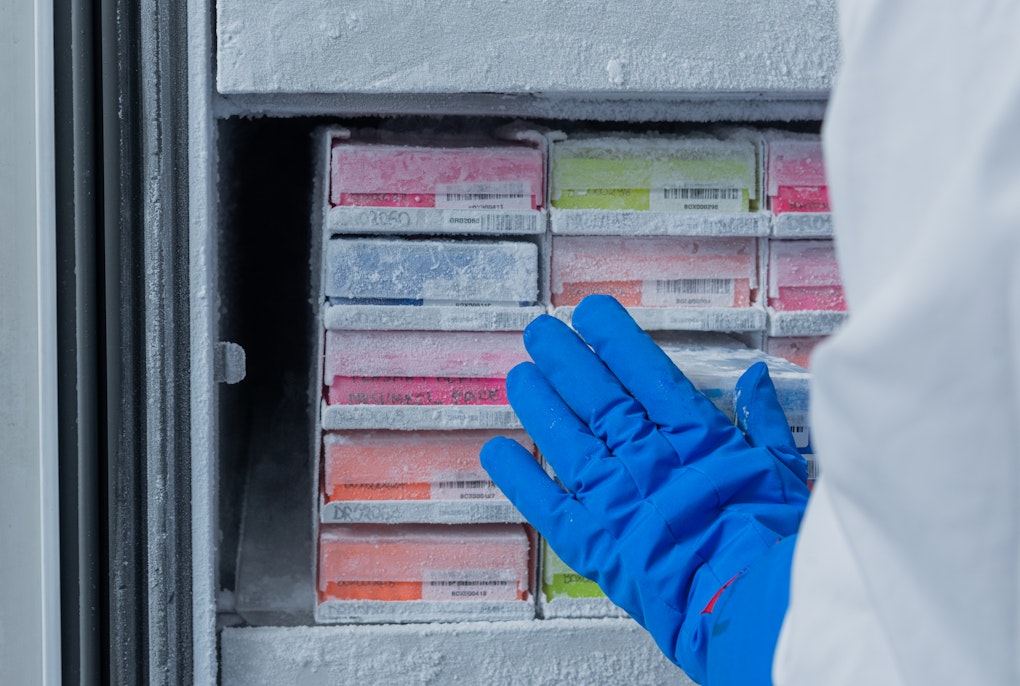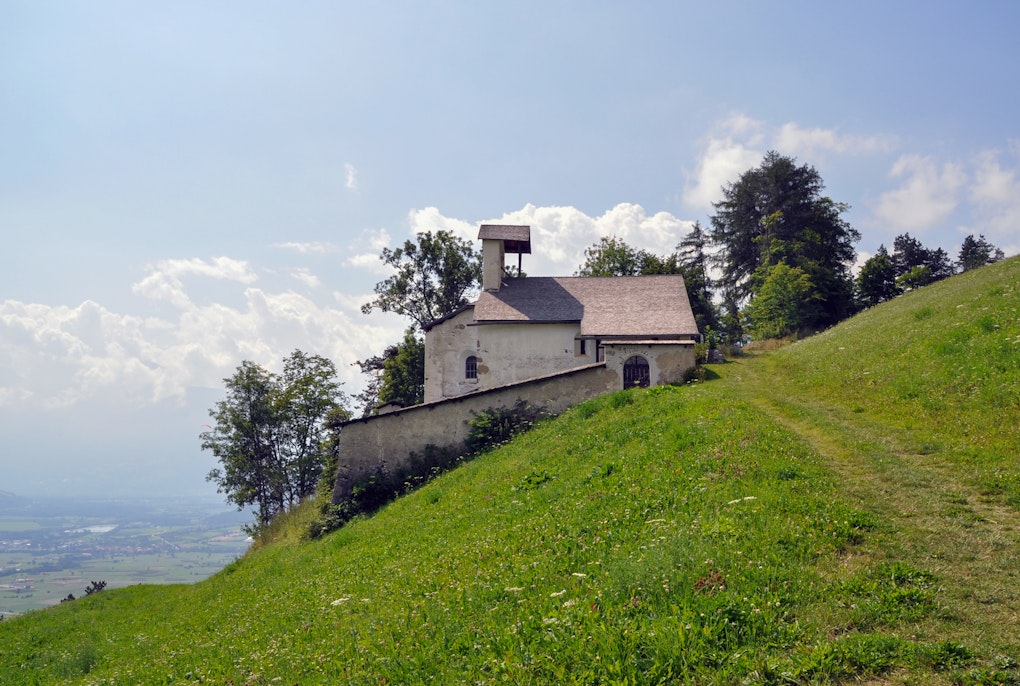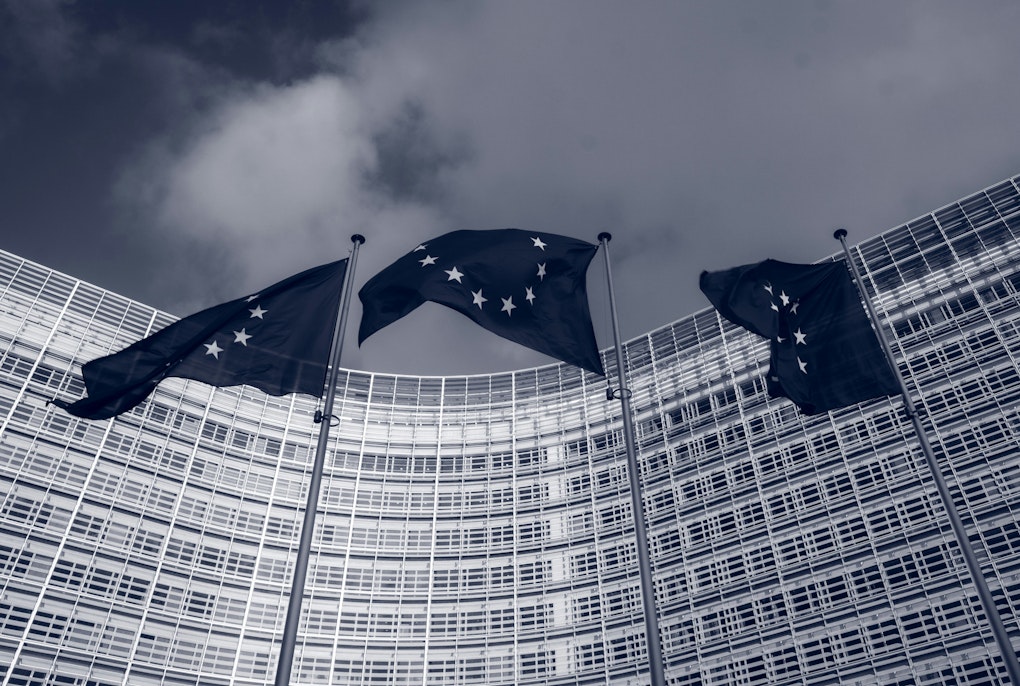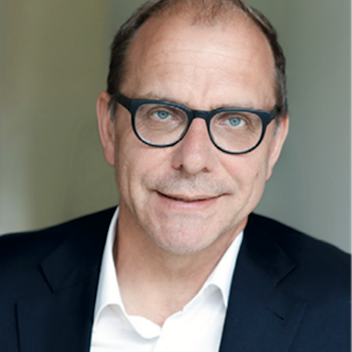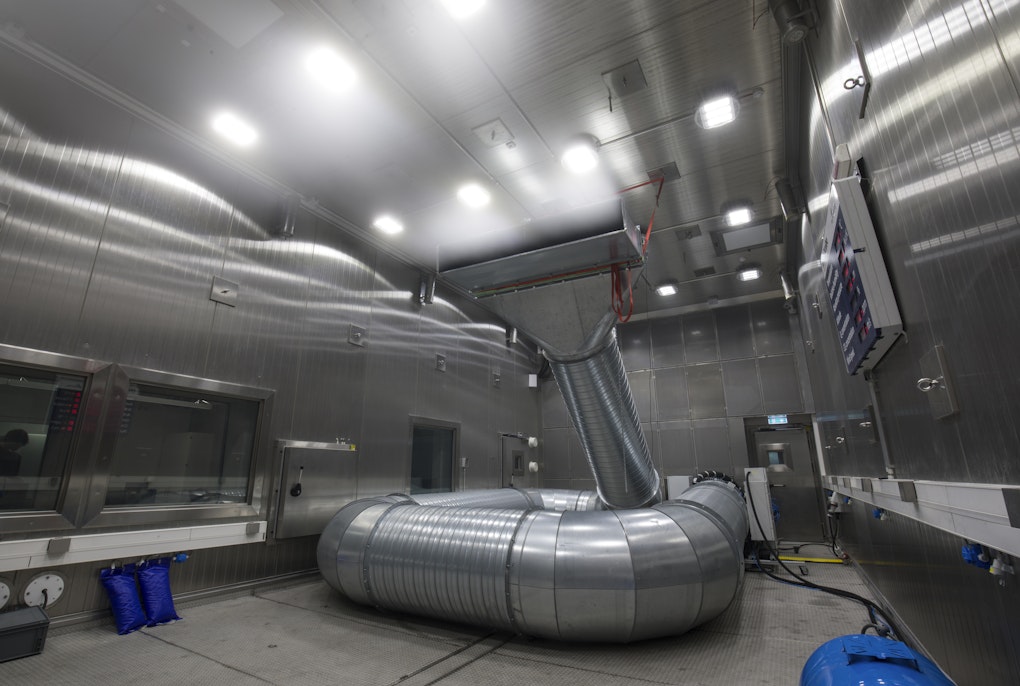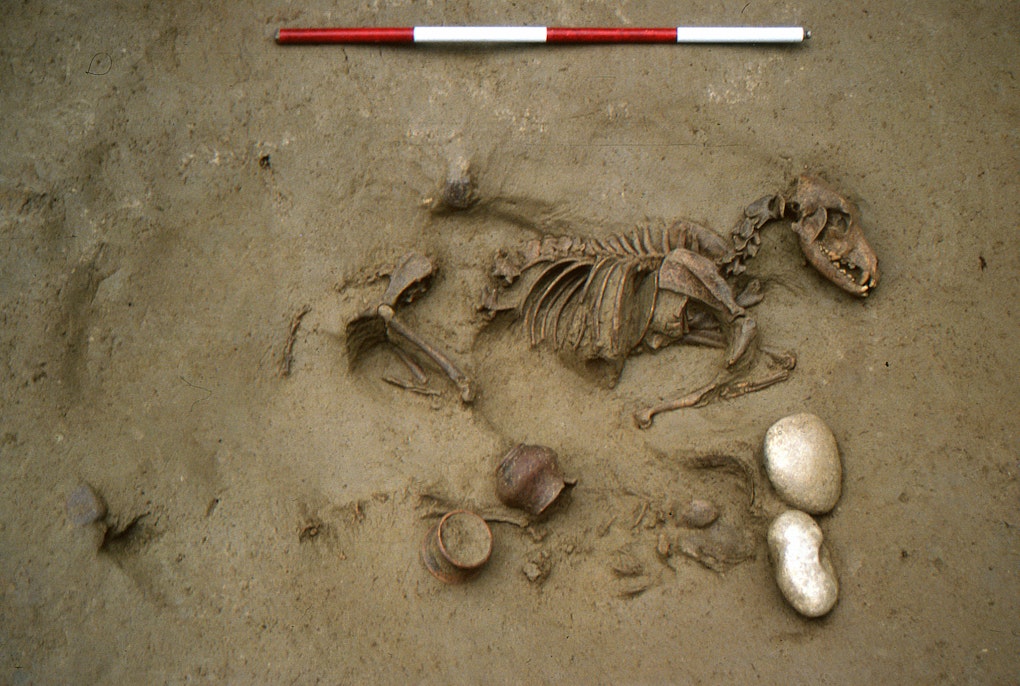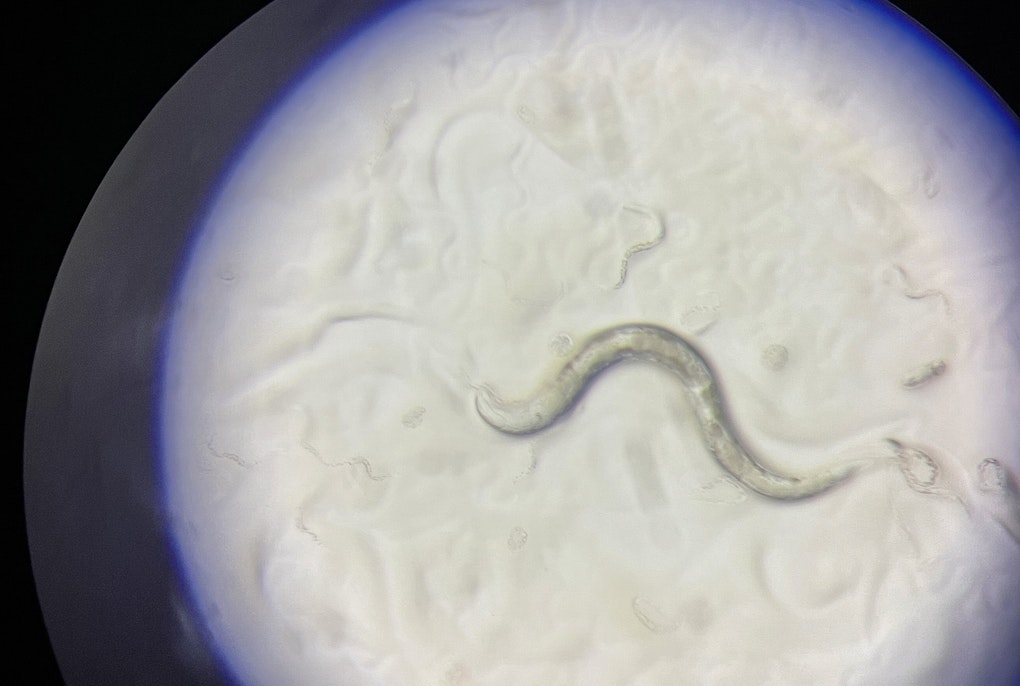magazine_ Interview
"Maybe Ötzi was a mean guy?"
Conversations between disciplines: interview with mummy researcher Albert Zink and telecommunications engineer Christian Steurer.
And though this question will remain unanswered, mummy researcher Albert Zink has already elicited many other secrets from the Iceman. Considering that the melting glaciers will probably uncover even more finds in the future, the idea of preparing for excavations at icy heights in the terraXcube is a promising one for him: the extreme climate simulator can reproduce any climatic condition in the world. It’s director Christian Steurer thinks this is realistic: mountain rescuers are already training in the terraXcube so they are able to operate in extreme weather.
Let's start with your shared location: The fact that terraXcube is located in the NOI-Techpark, a center for innovation, will come as no surprise to anyone - but how does mummy research fit in there, Mr. Zink?
Albert Zink: Admittedly, mummies are not necessarily associated with innovation, but the way we conduct mummy research is extremely innovative. On the one hand, we are developing very special methods, especially in molecular biology and genetics, to obtain genetic information - for example, we can investigate which diseases people suffered from or what their intestinal flora looked like, and the comparison with people living today then allows us to recognize developments and understand how humans have adapted over the course of history. On the other hand, we are also developing completely new methodical approaches for the preservation of mummies, which can then actually be applied to any organic material, from books to food.
Is it thanks to these innovative methods that your ancient DNA laboratory receives so many external orders?
Zink: Yes, the requests mostly concern such analyses. We are often asked, for example, to genetically analyze mummy or skeleton finds in order to clarify a relationship, or even the origin. In the case of mummies, museums often don't even know whether they come from Egypt or South America. Or a museum may notice that it has a problem with the conservation of its finds and therefore turns to us for assistance. We are one of very few mummy research institutes in the world, so we occupy a very specific niche.
The terraXcube is also unique of its kind, Mr. Steurer, what makes it so special?
Christian Steurer: In the terraXcube, we can create all the climatic conditions in the world, even the most extreme ones: We can simulate an altitude of 9000 meters, create temperatures from minus 40 to plus 50 degrees, any desired humidity, wind, rain, snow. And combine all parameters as needed: The other day, we generated additional strong wind at minus 40 degrees - it felt like minus 60 degrees. Creating extreme climatic conditions in the laboratory, means we can control and reproduce these parameters at will which is hugely important for researching altitude medicine, among other things. In field studies, the conditions for the test subjects are so different that the results are of little significance. In our climatic chamber, everyone can be exposed to exactly the same conditions and constantly monitored medically.
Can you describe a recent study?
Steurer: For a sleep study, a research team from the Institute of Mountain Emergency Medicine had 16 people spend the night at a simulation of 4,000 meters for ten days and observed their breathing. At high altitudes, breathing disorders normally occur during sleep. The study aims to clarify whether they can be reduced, for example, by the artificial addition of carbon dioxide. The results have not yet been evaluated, but there was an interesting sidenote/byproduct from the study: the climate chamber is not exactly homey - a large, bare, stainless steel-lined room; at the beginning of the study, we simply put beds in there until someone came up with the idea of creating a more pleasant ambience for the test subjects with wood-lined boxes - and indeed, they immediately slept better.
But the simulator is not only used for medical research ...
Steurer: No, we also do a lot of other testing, from clothing to large agricultural machines. A recent test with a drone in which we caused the rotor to ice up was very exciting: if something like that happens in reality, it can have devastating consequences, so it is important to develop technical solutions for such devices to remain operational even under extreme conditions. We also simulated an extreme case during a training session with mountain rescue forces: the resuscitation of casualties during a heavy storm. How do I communicate in deafening wind? Which devices are suitable? In the terraXcube you can prepare for such missions.
Ötzi was found at high altitude, and in recent years receding glaciers have been repeatedly revealing human and animal remains: Mr. Zink, could you imagine archaeologists and mummy researchers also training for operations in snow and ice in the terraXcube?
Zink: Why not. With the retreat of the glaciers, the probability of archaeological finds in the high mountains is bound to increase, so one should be prepared to do a proper excavation there and, if necessary, to stay longer. Ötzi was recovered far too quickly and was damaged as a result. For mummy experts or archaeologists, conditions at high altitude are not their daily bread - we normally work in museums or laboratories, so special training would certainly be useful. But the climate simulator could be interesting for our research work in another respect - it could help us to better understand mummification processes by simulating them - in the case of Ötzi, for example, we still don't know exactly how mummification took place in the glacier. In addition, the climate simulator would be a good way to test which conditions are ideal for preserving mummies. The great challenge is to take the right action immediately as in, when a find is made - to bring it to the right ambient temperature and humidity so that no information is lost, not even on a very small, molecular level.
You were able to elicit a surprising amount of information from Ötzi at this level - the detection of the stomach germ Helicobacter pylori, was sensational.
Zink: In this case, our investigation even shook up firmly established ideas. It had always been assumed that the Neolithic immigrants who settled in Europe already carried the variant of the common pathogen that occurs in Europe today. In 5300-year-old Ötzi, however, we found an original variant that today one would expect to find in India. The colonization history of Europe was therefore probably more complex than previously assumed. When we examine mummies or skeletal remains, we can take a direct look into the past, so to speak, and thus also better understand the evolution of pathogens - where they come from, how they have adapted to humans. This can then also serve current medical research. For example, we do a lot of research on tuberculosis, malaria, and syphilis, and are always in exchange with colleagues in the clinic who are dealing with present-day cases - these are all diseases that are still very present, despite all the medical progress. Together, we hope to come up with something that will take us a step forward again. Medicine is still a long way from being able to get such pathogens under control - as Corona has shown once again.
"With the help of a large number of parameters, we can, so to speak, make climate change happen in fast motion."
Christian Steurer
Mr. Steurer, we have learned that climate change will most likely result in more archaeological finds for mummy researchers. How does this topic concern you? Do you simulate global warming in the terraXcube?
Steurer: Yes, and at an accelerated rate to study the impact of the changes on plant organisms. We have the possibility to create different climatic conditions in four chambers and thus compare these effects. Last year, a research team from the Universities of Bozen-Bolzano and Innsbruck studied how different temperature, humidity and light conditions affect grapevines. In fact, the type and amount of light can also be changed in the small chambers. For irrigation, we have a device that collects rainwater, and we can, for example, feed carbon dioxide into the chambers to change the content in the air. With the help of all these parameters, we are, so to speak, making climate change happen in fast motion. In further studies, the vines will then be exposed to different altitudes to see what additional effects this has; due to warming, many plants will thrive at higher altitudes or migrate to them.
What major future issues can the terraXcube help us investigate besides climate change?
Steurer: We will certainly be very busy with the entire field of electromobility. Electric cars, electric buses, equipment that is powered by electricity – all may need to be tested especially under extreme conditions. On the other hand, a large field is opening up in the medical sector. So far, terraXcube has only conducted research on healthy people. A next step could be clinical studies on diseases in which factors such as those we can produce in the terraXcube play a role, for example in the area of hypoxia. I see a lot of future potential there.
"Ötzi's microbiome was even more diverse than ours is today. "
Albert Zink
Mr. Zink, your institute has also been working intensively on a promising medical topic for a few years: the human microbiome.
Zink: Microbiome research is indeed very topical because it is becoming increasingly clear to science how important the community of bacteria and other microorganisms living within and with us, is for our health. Many diseases and allergies seem to be directly related to a decreasing diversity of the human microbiome, especially in industrialized societies. We took a closer look at this using Ötzi's stomach material. Even the first results show that his bacterial community was still significantly more diverse than ours is today. We are also carrying out such analyses on other mummies. We then compare our results, for example, with investigations carried out on indigenous peoples. The question is, what can we learn from this for the population of today? For example, do we need to go back to a more natural diet? We are currently researching the connection with nutrition using different preserved excrement found in the prehistoric Hallstatt salt mine. These so-called coprolites were exceptionally well preserved there, so we have plenty of research material. If we were to limit ourselves to mummies, we would have few samples because many no longer have their gastrointestinal contents. In this respect, we were really fortunate in the case of Ötzi.
You have now dealt with Ötzi for so long and intensively: if you could face him, what would be your most pressing questions?
Zink: The first thing I would ask him would be his name. And then, of course, I would be interested to know what position he held in society and what kind of person he was. One tends to see mummies in a positive light. Ötzi must have been a good man we think, and now he's lying here, poor guy. But maybe he was a mean guy, and the arrow didn't hit him undeservedly? (laughs)
Christian Steurer
Christian Steurer is head of terraXcube - the Center for Extreme Climate Simulation. Before then, the telecommunications engineer co-founded the Institute for Applied Remote Sensing at Eurac Research and was director of the IT department at the South Tyrolean Health Care Authority for several years. Inspired by his work in the health care service and his close collaboration with research teams at the Institute for Mountain Emergency Medicine, he has been an enthusiastic volunteer paramedic with the White Cross since 2020.
Albert Zink
Albert Zink is an anthropologist and associate professor at the Ludwig-Maximilians-Universi- ty in Munich. He has been head of the Institute for Mummy Research at Eurac Research since 2007. His passion for mummies has never left him since he first became involved with them while studying biology in Munich. Not only has he studied the glacier mummy Ötzi, but mummies all over the world, including the famous Egyptian kings Tutankhamun and Ramses III. When he puts the mummies to rest, he picks up the guitar and plays jazz or his own songs.
